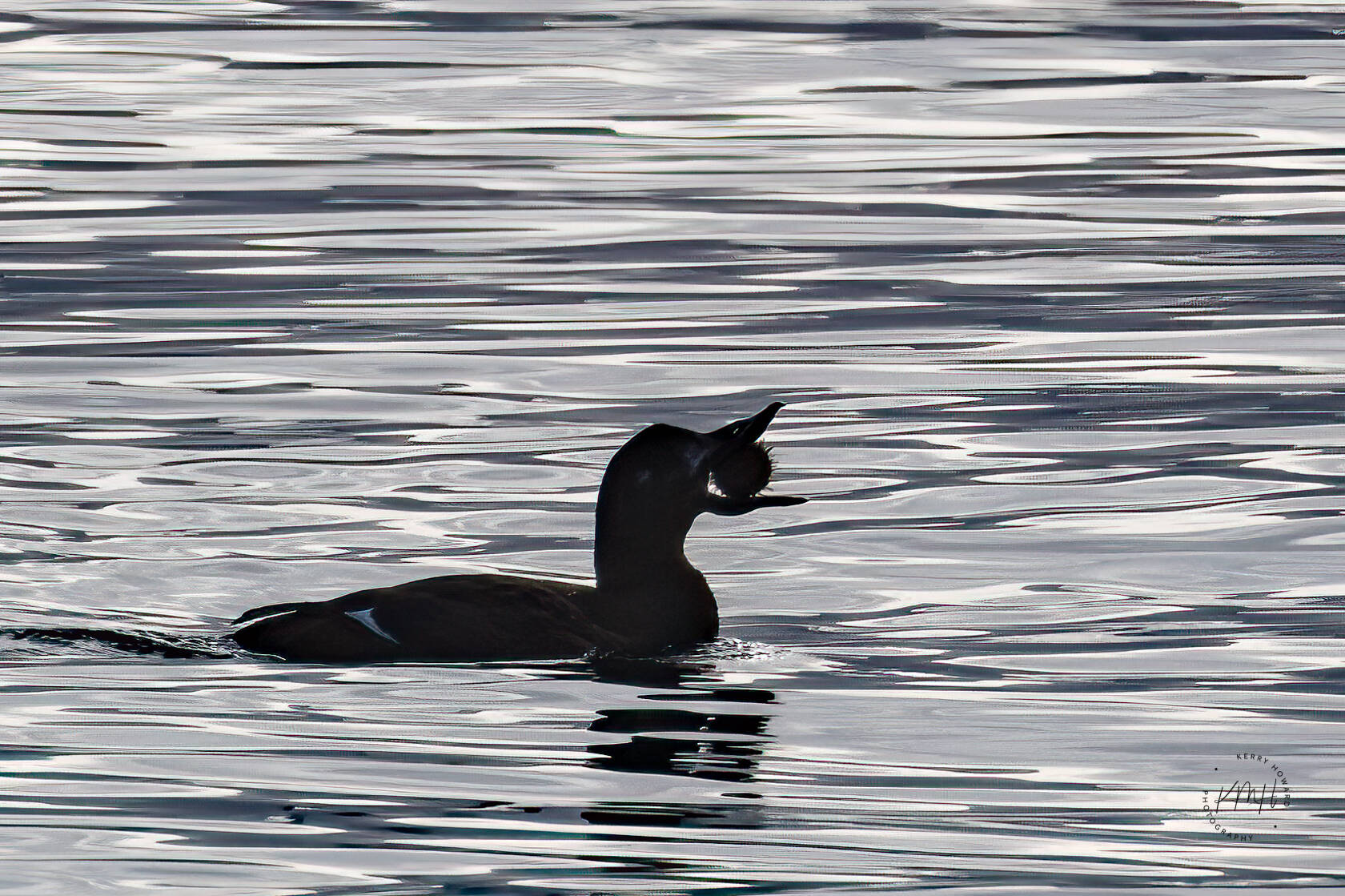By Mary F. Willson
Hummingbirds finally appeared at my house toward the end of April; they always seem to show up later here in the upper Mendenhall Valley than elsewhere in Juneau. The first one was a female, who visited the feeder several times, interspersed with wide, insect-catching flights over the pond. Several days later, a male appeared too.
Meanwhile, the red-breasted nuthatches have entertained me nicely. I can see them scurrying up and down the spruce trees just outside the window above my computer. There has been a pair around here for several years, and sometimes I see a couple of their offspring too, as they learn how to do nuthatch things.
In mid-April, a river otter appeared in my pond, sliding over the little dam and making a circuit around the edges. It came here for at least three days, cruising around in the pond and coming up with small items, probably coho fry, to munch. That is the first time, I think, that I’ve seen an otter out there. Coho have been coming up this tiny stream, occasionally, for years, and there are sometimes coho fry in the pond. But only recently has ADFG officially classified this stream as an anadromous fish stream. Hmmm, did that otter somehow hear that this creek is now officially cataloged as harboring salmon and thus is worth a visit??
Mallards come to this pond in spring, in considerable numbers; one day I counted 30 of them (that was before the females were busy with eggs). That was a maximum. More usually there would be eight or 10 of them. In the middle of April, an eagle made three passes over the pond, sending the ducks scuttling for shelter under some overhanging branches. Eagles don’t usually hunt around this pond, so I wonder what brought it here this time.
Excursions to various trails produced a few interesting observations. I went to the Rain Forest Trail in late March and found some mermaid’s purses washed up in the high tide wrack. There is apparently a spawning ground for long-nosed skates just off-shore somewhere. Their egg-cases turn up every spring on a particular beach here, usually with holes poked into them by some predator.
On the Kaxdigoowu Héen Dei (Brotherhood Bridge Trail), on April 23, we watched an eagle carry a huge swag of grass in its fists from the riverside meadow to the edge of the forest. It circled a few times and disappeared into the foliage of a big spruce tree, where the nest was near the trunk. This seemed a bit late for nest lining, because other nests we know of already had eggs, but perhaps all that grass was just more insulation against the cold weather at that time.
In late April, we saw a robin next to a rain puddle on the dike trail. After walking around for a bit, it poked its bill into the mud and came up with a nice gob. Accompanied by its observant mate, it then flew off with the load to help make the nest. I don’t think that most other thrushes use so much mud in their nests, so I wonder how it happened that robins do so.
On the Boy Scout Trail in mid-April, we saw several bumblebees zipping around over the meadow. There weren’t many blueberry flowers out there, although there were lots in the forest, so maybe the bees were just getting oriented after emerging from hibernation. These were presumably queen bees, which usually emerge early; one had been seen at the Arboretum a week or two earlier. The appearance of bees is always something I look forward to.
A little stroll at Fish Creek yielded a variety of ducks, some flights of small shorebirds, and ruby-crowned kinglets in full song. Best of all was a little flock of several sparrows: savanna, song, and one American tree sparrow.
They were all flitting from grass to low branches of spruces at the edge of the wetland and back again.
And here are a couple of puzzles:
— We often see scoters during the winter, as they forage along the coasts and in the bays. They commonly feed on molluscs, but sometimes they grab sea urchins. That raises the question of how they deal with all those spines. When sea otters eat urchins, they can use their paws to break off the spines and crush the shell. But how do scoters manage the spines? So far, I have found no info.
— Along the dike trail near the wetlands, there is a stand of salmonberry that is gradually expanding, indicating that it is healthy. Every year it leafs out and produces flowers that are self-compatible. But a regular, reliable observer has never found fruit on the canes in that stand. It’s hard to believe that no bees or flies or other possible pollen vectors visit this stand. So why are there no fruits?
• Mary F. Willson is a retired professor of ecology. “On the Trails” appears every Wednesday in the Juneau Empire.

